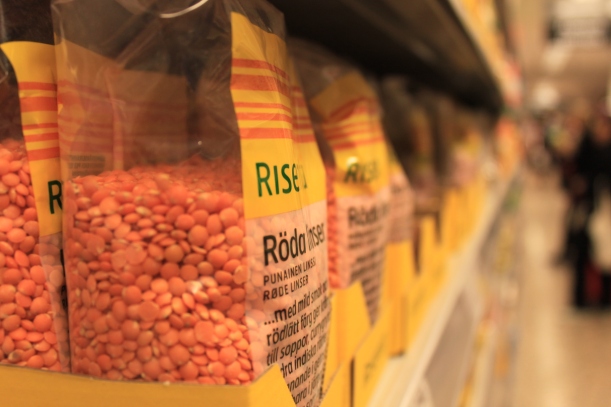Man, I love lentils. And chickpeas. Black beans. Give me any legume, basically, and I am a happy camper. What a typical vegetarian, you say? Well, keep reading, have a look at this Ensia article, from which most of this information comes from, and think again. Turns out, there are at least five reasons why legumes might just be the crop of the future.
1. Worried about protein? Well, worry no longer.
Legumes of all varieties are an excellent source of protein, with many beans sporting between 20 to 25 percent protein reaching up to 40 (in the case of soy beans), but lack the cholesterol that meat protein has. You’ll find other nutrients such as antioxidants, calcium, iron and zinc in them as well. They are really rich in fibre, which most of us following a Western diet lack, making them “pretty much the perfect food” according to some nutritionists. They are also filling and cheap if you can find them in bulk, making them the ideal meal to feed a crowd or just a hungry grad student. Furthermore, they are a great pathway to discover ethnic cooking, as they are used in cuisines as diverse as Indian (take dhal or chickpea korma), Ethiopian (shiro wot) and Mexican (three-bean chili, anyone?). Holy yum!
2. They can break low-income farmers’ hunger cycle
Since they are a nitrogen-fixing crop (see below), leguminous crops can be planted interspersed with other more typical cereal crops without further impacting soil quality. They mature faster than cereals as well, leading to a smaller gap between planting season and harvest and thus can contribute to feed the family while one is waiting for other crops to mature. And they can become an interesting diversification option, with some varieties yielding high prices on regional markets and even becoming export crops, as in the case of chickpeas in Ethiopia which are exported to India. This leads to additional income = less hunger! Finally, dried beans also keep for a really long time, making it a nice “insurance crop” for lean periods.
3. They are super versatile and adaptable even to “bad soils”
Legumes are in general more drought- and pest-resistant than many cereals and demand less irrigation in arid areas, making them the perfect crop to use on deteriorated land where little else will grow, according to Vaclav Smil, distinguished professor emeritus of the University of Manitoba and a leading expert on nitrogen, legumes and agriculture. When used as cover crops, they can also prevent erosion from happening.
4. They are magicians when it comes to nitrogen fixation
Leguminous crops are sort of magical in that they are able to bind nitrogen in the air and fix it into nitrogen compounds that they can actively use for their growth. Not only that, these compounds are set free once the plant dies and degenerates in the soil. Thus, not only do you not have to add (as much) synthetic nitrogen fertilizer to grow legumes, their decomposition can actually improve the soil instead of depleting it. This is why organic farmers often use leguminous cover crops such as clover and plow it under as “green manure”, but you can do this just as well with other legumes.
“I personally think that if we could be satisfied eating beans as a protein source, oh my gosh, we would have so much less need for land used for grain production.” — Tim Crews
5. They are a much more efficient source of food than our current system
Growing our protein sources directly, rather than growing grain to then feed animals to then slaughter and get protein from, would be vastly more efficient in terms of water, fertilizer, pesticides and land used in general, particularly if we are concerned about feeding a growing population.
This is why initiatives such as N2Africa are working on making legumes better and even more widely available to subsistence farmers. According to the Ensia article, N2Africa “partners with local agricultural development and national crop-breeding programs to expand the farm area cropped with legumes, help link farmers to markets, enhance the nitrogen-fixing characteristics of legumes by inoculating them with selected strains of Rhizobia, and breed legume varieties that are more pest, disease and drought resistant and that provide higher nutritional value and crop yields.” Check out a video about the program below:
[vimeo http://vimeo.com/15048183]
However, according to plant geneticist Jeffrey Ehlers, there is still relatively little public investment in legume crops.
“Legumes have remained the orphan crops,” lacking a political constituency, Ehlers says. “They need someone to speak up for them.”
Why not speak up for them by putting some lentils in your shopping cart during your next grocery shop visit?

I absolutely love lentils, they are a super staple for me, and so are chickpeas and all sorts of beans! I’m happy to have discovered all these additional benefits!